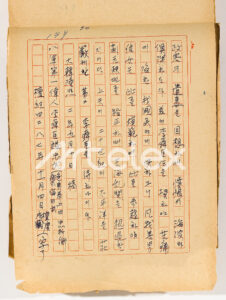Yun Se-bok (1881-1960) was born in 1881 in Miryang, Gyeongsangnam-do, and began his active involvement in the independence movement after joining Daejonggyo in 1910. In 1909, he moved to Hanseong (modern-day Seoul) and joined Daejonggyo on July 13, 1910, just before Korea’s annexation by Japan. After consulting with his elder brother, he sold off his family assets and moved to Manchuria to devote himself to various activities supporting the independence movement.
In Manchuria, Yun Se-bok used his personal wealth to establish schools and organized various groups dedicated to the independence movement. After becoming the third leader of Daejonggyo in 1923, he continued his efforts in propagating Daejonggyo and supporting the independence movement despite relentless oppression from the Japanese authorities. He relocated Daejonggyo’s headquarters to Manchuria and led several organizations that spearheaded the independence struggle.
In 1942, Yun Se-bok was arrested by the Japanese and subjected to torture, but he continued his independence activities even while imprisoned. After his release following Korea’s liberation, he returned to the newly established Republic of Korea and contributed significantly to the revival and development of Daejonggyo. He restructured the religious organization and was instrumental in founding Hongik University, ensuring that the spirit of the independence movement lived on.
In recognition of his contributions, the South Korean government awarded Yun Se-bok the Order of Merit for National Foundation in 1962. His dedication remains a vital part of the history of both the independence movement and Daejonggyo.



